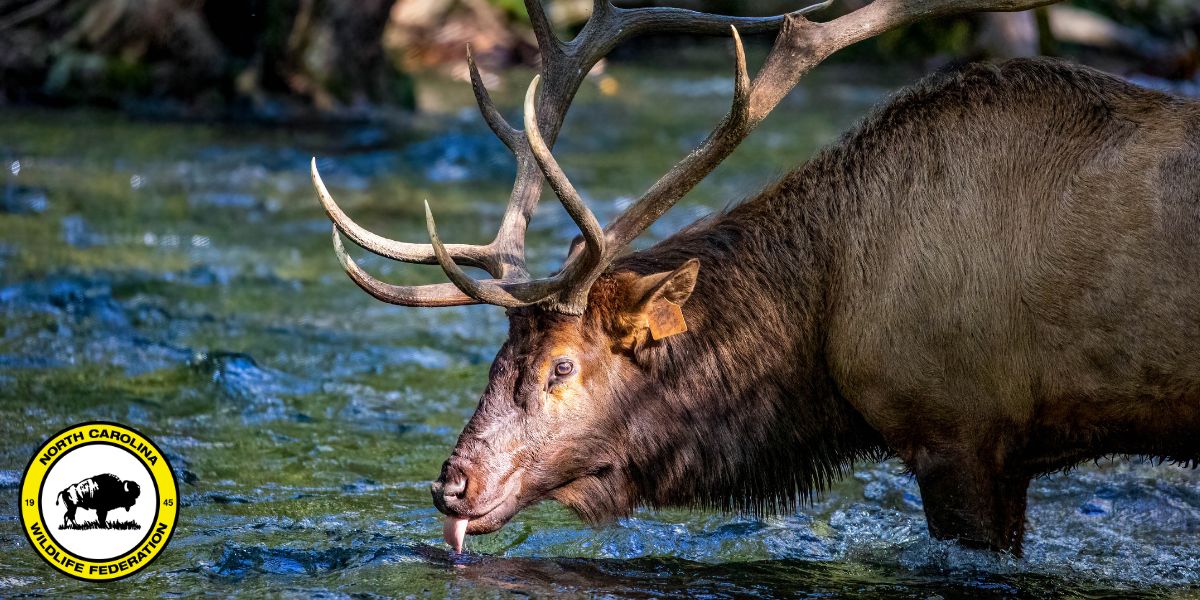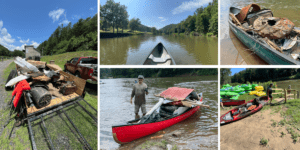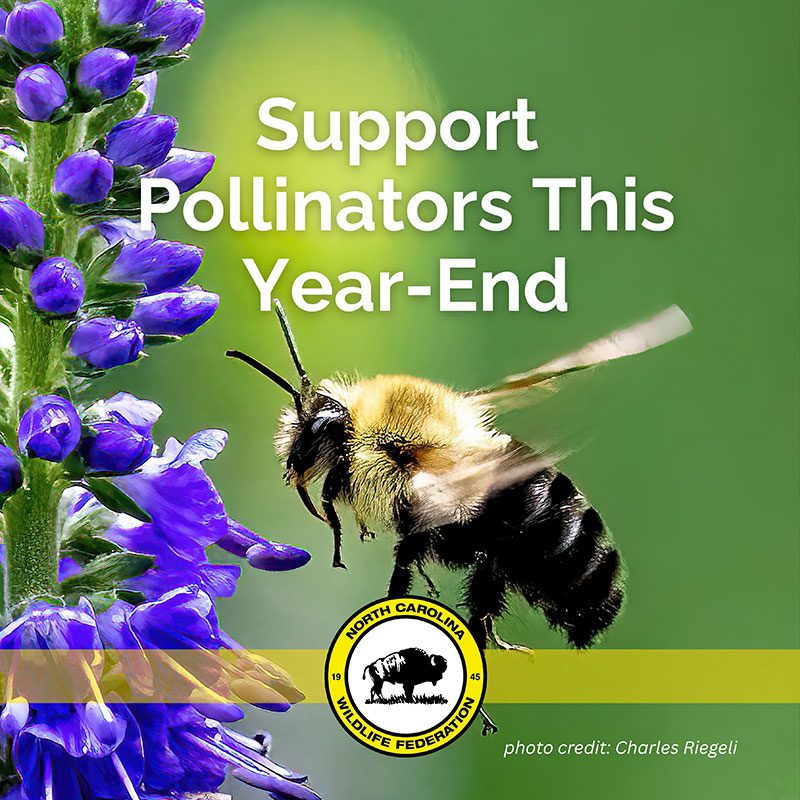Mountain Waters, Mountain Wildlife: The Fight to Save Western North Carolina’s Stream Ecosystems

North Carolina’s mountain region—spanning 23 counties along the southern stretch of the Appalachian range—is one of the most geologically and biologically diverse landscapes in eastern North America. Rising from the foothills at the dramatic Blue Ridge Escarpment and climbing to the peak of Mount Mitchell, the highest summit east of the Mississippi at 6,684 feet, these ancient mountains host a mosaic of microhabitats shaped by altitude, slope, water, and time.

Rocky Mountain elk (Cervus canadensis nelsoni) by Cassia Rivera, NCWF Photo Contest Submission
The region’s rugged terrain, with bedrock composed of metamorphic and igneous rocks like gneiss, granite, and quartzite, has weathered over millennia into fertile, layered soils and saprolite—”rotten rock” that nurtures rich forest communities. These ecosystems include high-elevation spruce-fir forests, grassy balds, and mountain cove forests that harbor a profusion of biodiversity. Within these cove forests, naturalist William Bartram once described the intoxicating air of “blushing Rhododendron and fair Lily of the valley.”
Some of the most vital and life-sustaining habitats in the region are its cold, fast-moving mountain streams and rivers. These waterways, fed by springs and shaded by dense canopies, act as ecological arteries—distributing nutrients, oxygen, and habitat through the folds of the mountains. The clean, cool water provides critical habitat for a wide range of species, many of which exist nowhere else on Earth.
The rocky bottoms of these streams are essential nurseries for aquatic insects like

Eastern hellbender (Cryptobranchus alleganiensis) by Brady OBrien, NCWF Photo Contest Submission
caddisflies, stoneflies, and mayflies. These insects, in turn, feed fish like native brook trout (the only trout – actually a member of the char family – native to the region), which require cold, oxygen-rich water to survive. These streams also support endemic salamanders—such as the hellbender, North Carolina’s largest and most elusive amphibian—and rare freshwater mussels like the federally endangered Appalachian elktoe, now restricted to isolated stretches of mountain waterways due to habitat degradation and pollution.
Downstream, this intricate food web ripples outward to support birds of prey, river otters, kingfishers, and black bears. These cool-water ecosystems, so vital to the survival of mountain wildlife, are increasingly vulnerable to warming temperatures, sedimentation, agricultural runoff, invasive species, and unchecked development.
NCWF’s Work to Restore Mountain Waters Habitat
Recognizing this urgency, North Carolina Wildlife Federation (NCWF) has expanded its conservation reach into the mountains through its grassroots Community Wildlife Chapters, including two of the newest: High Country Wild and Swannanoa Valley WILD!. These chapters are grounded in the understanding that protecting wildlife begins with protecting habitat—especially riparian corridors and stream ecosystems that form the foundation of mountain biodiversity.

High Country Wild cleanup on the New River
High Country Wild, active in Ashe and Watauga counties, focuses on restoration and conservation education through the lens of species most at risk—referred to as Species of Greatest Conservation Need. One of their first major efforts involved river cleanups along the New River in partnership with local groups like the New River Conservancy and Keep Ashe Beautiful. Volunteers have already removed thousands of pounds of trash and debris, significantly improving habitat quality for aquatic insects, fish, and amphibians. Clean water is not just a scenic asset—it’s a requirement for life at every trophic level.
Swannanoa Valley WILD! is similarly focused on habitat restoration in and around the Swannanoa, Black Mountain, and Montreat areas. One flagship project centers on Fox Creek Park, which was devastated by flooding during Hurricane Helene. The storm deposited silt, altered the streambed, scattered debris, and allowed invasive species like kudzu and multiflora rose to overtake the riparian zone. In partnership with Friends of Fox Creek Park, and with the help of hundreds of volunteers, the chapter has worked tirelessly to restore the area. Today, Fox Creek once again supports a flourishing diversity of plants and animals—jewelweed, elderberry, warblers, salamanders, snakes, fungi, and more now thrive in the recovering habitat.

Swannanoa Valley WILD! Fox Creek Park workday after torrential flood damage in the wake of Hurricane Helene
Both chapters are also preparing for the upcoming planting season by planning riparian buffer restorations using native plants and livestakes. These vegetated streamside zones are essential for stabilizing banks, filtering runoff, providing shade to regulate water temperatures, and creating complex, multi-layered habitat for wildlife. By rebuilding these buffers, the chapters aim to restore ecological integrity and resilience to stream systems increasingly stressed by climate and human pressures.
Both High Country Wild and Swannanoa Valley WILD! are engaging their communities through education and outreach, helping residents understand the critical link between healthy waterways and healthy wildlife. From interpretive walks to community planting events and wildlife monitoring, these programs cultivate a sense of stewardship that is essential for long-term conservation success.
As North Carolina’s mountain ecosystems continue to face unprecedented challenges, the work of NCWF and its local chapters demonstrates that real, measurable progress happens when communities come together to heal the land and water. The streams, forests, and species of the Southern Appalachians are deeply interconnected—and thanks to local efforts, there is renewed hope for the continued flourishing of this remarkable region.
Written by:

– Bates Whitaker, NCWF Communications & Marketing Manager

– Luke Bennett, NCWF Conservation Coordinator


